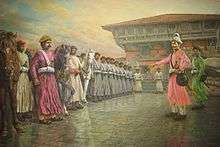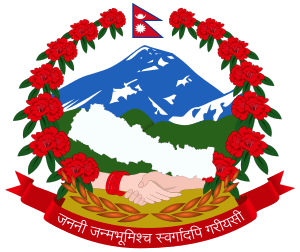Unification of Nepal

Before the Shah dynasty took over Nepal, it was limited to the Kathmandu valley and surrounding territories which consisted of many kingdoms. After conquering the valley in the mid-eighteenth century, King Prithvi Narayan Shah moved his ruling state to Nepal from Gorkha. He then started his conquering campaign with the banner of Nepal than Gorkha.
Establishment of expanded Gorkha kingdom
Gorkha was the kingdom which wa small in size and was low in economic status. When Prithvi Narayan Shah became the king on 25 chaitra 1799 he started unification of Nepal from 1800. Prithvi Narayan Shah wanted at first to attack over Nuwakot because Nuwakot durbar was at height so no one could attack easily. So he attacked over Nuwakot.
Invasion in Nuwakot
Nara Bhupal Shah, the king of Nepal, had already tried to invade in Nuwakot in 1794 B.S. At that time, Nuwakot was under the administrative control of Kantipur (today known as Kathmandu), so Kantipur supported Nuwakot during the invasion. After his defeat, Nara Bhupal Shah gave up all his efforts at unification and handed the administrative power over to Prithivi Narayan Shah and Chandraprabhawati (the eldest queen of Nara Bhupal Shah). Nara Bhupal Shah died in 1799 B.S. and Prithivi Narayan Shah ascended to the throne on Chaira 25, 1799 B.S.
After his succession to the throne, he planned to begin a unification campaign by attacking Nuwakot in 1800 B.S. He sent Gorkhali troops, under Kaji Biraj Thapa, to attack Nuwakot. Biraj Thapa waited at Khinchet by the side of Trishuli River for an appropriate time to launch the attack. Prithivi Narayan Shah didn't like the strategy of Biraj Thapa and even didn't trust him because of the fault of reporting Maheshwor Panta. So, he sent another Gorkhali troops again under Maheshwor Panta. The troops under Maheshwor Panta were defeated.
After his conquest of the Kathmandu Valley, Prithvi Narayan Shah conquered other smaller territories south of the valley to keep other smaller fiefdoms near his Gurkha state out of the influence and control of British rule. After his kingdom spread from north to south, he made Kantipur the capital of expanded country which was known as Kingdom of Gorkha (Gorkha Samrajya).[1][2]
See also
References
- ↑ http://www.lonelyplanet.com/nepal/history
- ↑ Joseph Bindloss (15 September 2010). Nepal 8. Lonely Planet Publications. pp. 37–. ISBN 978-1-74220-361-4.
Further reading
- Fr. Giuseppe. (1799). An account of the kingdom of Nepal. Asiatic Researches. Vol 2. (1799). pp. 307–322.
- Reed, David. (2002). The Rough Guide to Nepal. DK Publishing, Inc.
- Wright, Daniel, History of Nepal. New Delhi-Madras, Asian Educational Services, 1990
